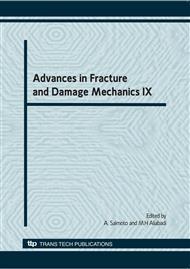p.761
p.765
p.769
p.773
p.777
p.781
p.785
p.789
p.793
Punching Shear Strength of Biaxial Hollow Slab with Donut Type Hollow Sphere
Abstract:
This paper presents the punching shear capacities of biaxial hollow slab with donut type hollow sphere. Recently, various types of slab systems which can reduce self-weight of slabs have been studied as the height and width of building structures rapidly increase. A biaxial hollow slab system is widely known as one of the effective slab system which can reduce self-weight of slab. According to previous studies, the hollow slab has weakness in slab-column connection. In addition, the present code does not provide a clear computation method for the punching shear strength of hollow slab. In this study, the special type of cage was used to improve punching shear capacities and fix the hollow spheres in critical section. To verify the punching shear capacities of this biaxial hollow slab, punching shear tests were performed. Four test specimens were used for test parameters. One was conventional RC slab and three were hollow slabs. The test parameter was the areas of critical section which were determined by the number of hollow spheres in critical section.
Info:
Periodical:
Pages:
777-780
Citation:
Online since:
November 2010
Authors:
Price:
Сopyright:
© 2011 Trans Tech Publications Ltd. All Rights Reserved
Share:
Citation:


